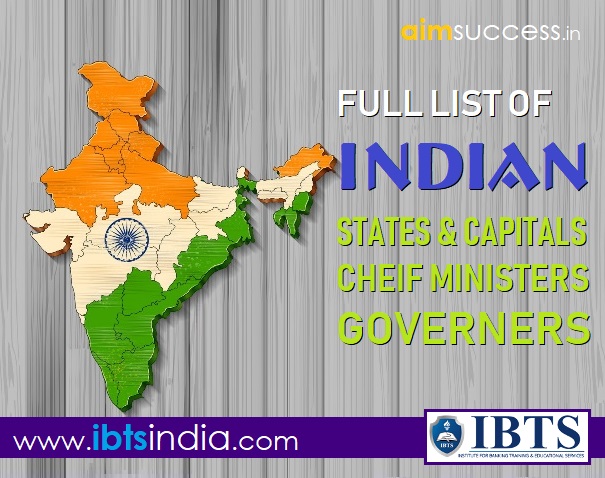Reading Comprehension MCQ for IBPS RRB/ PO/ Indian Bank 2018: 10 Sep
Directions : Read the following passage carefully and answer the given questions.
What is common to Bhutan, Venezuela, the United Arab Emirates (UAE) and Madhya Pradesh? All of them have a ministry/department for happiness. Bhutan is talked about the most, with the idea of GNH (Gross National Happiness) presented as some kind of alternative to GDP (gross domestic product). GNH is built into Bhutan’s constitution, in Article 9, on Principles of State Policy. What is invariably quoted is Article 9.2: “The State shall strive to promote those conditions that will enable the pursuit of Gross National Happiness.” However, this follows Article 9.1: “The State shall endeavour to apply the Principles of State Policy set out in this Article to ensure a good quality of life for the people of Bhutan in a progressive and prosperous country that is committed to peace and amity in the world.”
Operationally, what does this mean? Those who mention Bhutan talk about GNHI (Gross National Happiness Index), administered by the Centre for Bhutan Studies and GNH Research. GNHI is based on four pillars (political, economic, cultural and environmental) and nine domains (which can be skipped for present purposes). There were surveys in 2010 and 2015 to determine how Bhutan performed on GNHI. Hence, along a happiness/unhappiness continuum, progress could be measured and one had an aggregate measure that was an alternative or supplement to GDP, based on subjective responses to questionnaires that were then aggregated. To state the obvious, Bhutan has a population of around 7,50,000.
But I don’t think the alternative or supplementary summary measure is the point. The point is the Planning Commission and Committee of Secretaries being subsumed in the Gross National Happiness Commission (GNHC). In other words, feedback received from GNHI surveys is factored into government policies and public expenditure priorities, reflected in central and local body plans. More than the aggregate measure, if I have understood the idea right, this suggests decentralised planning to me. Ascertain the needs of gram panchayats/urban local bodies. Use those local plans to aggregate and move up to a block level, district level and national plan. If we get too fixated on the alternative to the GDP idea, we lose sight of this process, the operational and much more important part.
After a lot of sarcastic comments and dark humour in 2013, I haven’t heard much about Venezuela’s vice ministry of supreme social happiness. Perhaps it just vanished, because of chaos and general uncertainty. The initial idea seems to have been to converge anti-poverty programmes directed at disabled, homeless, poor and old-age pensioners. Unlike Bhutan, you don’t ask people what their priorities are. Given the ideology of the government, you know what people want, or should want. At best, you synergise across schemes. This also illustrates why discussions on happiness that mention both Bhutan and Venezuela in the same breath are misleading.
I don’t think it is fair to place UAE in the same bracket either. In 2016, UAE announced a new ministry (and minister of state) for happiness. It may be early days, but so far, all this ministry seems to have done is to train officers from federal and local government to become “chief happiness and positivity officers”. I am not sure the UN General Assembly Resolution of July 19, 2011 was a very good idea: “(1) Invites Member States to pursue the elaboration of additional measures that better capture the importance of the pursuit of happiness and well-being in development with a view to guiding their public policies; (2) Invites those Member States that have taken initiatives to develop new indicators, and other initiatives, to share information thereon with the Secretary-General as a contribution to the United Nations development agenda, including the Millennium Development Goals”.
Irrespective of what is done to public policy formulation, people are jumping on to the bandwagon of measuring and pushing something that is, at best, elusive. The UN’s World Happiness Report, an annual feature since 2012, is based on diverse indicators across GDP per capita, social support, healthy life expectancy, freedom to make choices, generosity and perceptions of corruption (trust). Measure a country’s distance from the perfect dystopia and you have a rank and a score. In 2016, India had a rank of 118 out of 150 countries.
If citizens are happier in a certain country, presumably people would want to migrate there, given a choice. In 2016, the top three countries were Denmark, Switzerland and Iceland and both Nepal and Bangladesh have higher ranks than India. It is worth checking out the number of Indian immigrants to these five countries. Among India’s states, Madhya Pradesh was the first one to start a happiness department in 2016. It is early days there too. At the moment, the focus is on volunteers training people to positively impact the lives of others. This is thus an attempt to bring about behavioural changes in people, not behavioural changes within government.
1. Which of the following is/are determinants of Gross National Happiness Index of Bhutan?
(A) Four pillars (political, economic, cultural and environment)
(B) Nine domains
(C) Answer to well-prepared questionnaires
(A) Four pillars (political, economic, cultural and environment)
(B) Nine domains
(C) Answer to well-prepared questionnaires
1) Only (A) and (B)
2) Only (B) and (C)
3) Only (A) and (C)
4) Only (A)
5) All (A), (B) and (C)
2) Only (B) and (C)
3) Only (A) and (C)
4) Only (A)
5) All (A), (B) and (C)
2. Find the incorrect statement on the basis of the given passage.
1) The ministry for happiness in UAE was established in 2016.
2) According to UN’s World Happiness Report, 2012, India had a rank of 118 out of 150 countries.
3) Madhya Pradesh is the first state in India to start a happiness department in 2016.
4) Only 2) and 3)
5) All 1), 2) and 3)
2) According to UN’s World Happiness Report, 2012, India had a rank of 118 out of 150 countries.
3) Madhya Pradesh is the first state in India to start a happiness department in 2016.
4) Only 2) and 3)
5) All 1), 2) and 3)
3.Which of the following does not have a ministry/department for happiness?
1) Bhutan
2) Venezuela
3) UAE
4) Madhya Pradesh
5) None of the above
2) Venezuela
3) UAE
4) Madhya Pradesh
5) None of the above
4. The statement, “The State shall strive to promote those conditions that will enable the pursuit of Gross National Happiness” is associated with
(A) Madhya Pradesh
(B) Thailand
(C) Venezuela
(A) Madhya Pradesh
(B) Thailand
(C) Venezuela
1) Only (A)
2) Only (B)
3) Only (C)
4) Both (A) and (C)
5) None of these
2) Only (B)
3) Only (C)
4) Both (A) and (C)
5) None of these
5. What is/are the indicators of UN’s World Happiness Report?
(A) Healthy life expectancy
(B) Generosity and perception of corruption
(C) Per capita GDP
(A) Healthy life expectancy
(B) Generosity and perception of corruption
(C) Per capita GDP
1) All (A), (B) and (C)
2) Only (A) and (B)
3) Only (A) and (C)
4) Only (B) and (C)
5) Only (C)
2) Only (A) and (B)
3) Only (A) and (C)
4) Only (B) and (C)
5) Only (C)
Answers:
- 1
- 2
- 5
- 5
- 1











